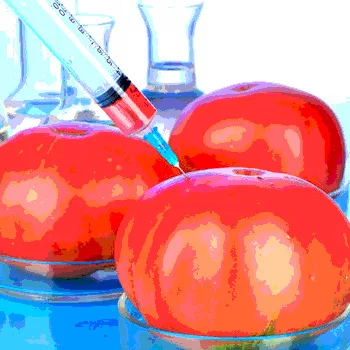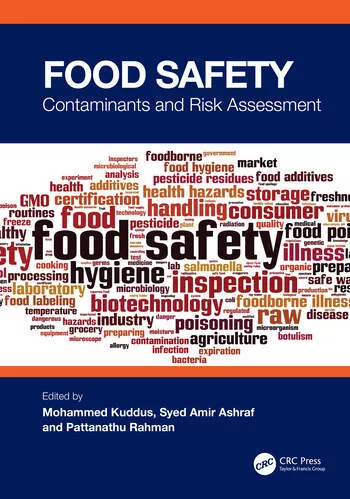Foods and Antibiotic Resistance: Not All Resistance Is Created Equal

Antibiotic resistance used to be a concern that was associated exclusively with hospitals. However, the focus of public health and policy efforts have now expanded beyond the clinic to include concerns about the role of agricultural antibiotic use on human health, and the general role that foods have in transmitting antibiotic resistance to consumers. Even though the overall burden of clinical resistance is predominantly impacted by antibiotic use in human medicine, the severity of the antibiotic resistance problem means that all potential sources of resistance need to be evaluated, including food. In addition to the biological reasons for adding antibiotic resistance to your food safety vocabulary, this issue has been receiving a significant amount of national and international political and regulatory attention.
So, is antibiotic resistance something that you need to evaluate for your product? Which food products pose the highest risk? Antibiotic-resistant bacteria and genes can be found in both organic and conventional production systems. Antibiotics are broadly used in food animal production (meat, poultry and fish) and can potentially impact a variety of products. Antibiotics are also used to control plant pathogens in fruit production and are used in the production of dairy products, such as cheese and yogurt, to prevent the growth of spoilage organisms during starter culture amplification. Antibiotic resistance can be a concern in the lactic acid bacteria that are used as starter cultures for fermented foods and probiotics. Finally, the issue of antibiotic resistance impacts fruits and vegetables via the ubiquitous nature of antibiotic resistance in the soil and in manure-based fertilizers.
When evaluating your products, the first thing to know is that not all antibiotic resistance is created equal. There are many different kinds of antibiotic drugs and many different kinds of resistance. For example, the World Health Organization has a prioritized list of 260 drugs that it considers to be important for human health. For each of these drugs, there are multiple mechanisms of resistance, each one often encoded by multiple genes. Tetracycline resistance is encoded by over 25 different genes. If you are interested in measuring tetracycline resistance in your product, which tetracycline resistance genes should you use?
Another thing to know when evaluating your products and processes for antibiotic resistance is that antibiotic resistance does occur naturally. Antibiotic drugs come from soil bacteria, and the genes that code for antibiotic resistance are ubiquitous in the environment. Some types of bacteria have naturally occurring, or “intrinsic,” resistance that is a fundamental characteristic of the genus or species. For example, anaerobic bacteria are intrinsically resistant to aminoglycosides, because they lack the oxidative metabolism needed to drive the uptake of this kind of drug. Gram-negative bacteria are intrinsically resistant to vancomycin, because the drug cannot penetrate the bacterial outer membrane. For food safety professionals, any assessment of resistance needs to start with an understanding of what kinds of resistance genes are naturally carried by the bacteria associated with your product. For example, fermented foods rely on a process that enriches lactic acid bacteria. By enriching lactic acid bacteria, you also enrich for the kinds of antibiotic resistance carried by lactic acid bacteria. Metagenomic studies of kimchi show that 31 percent of the metagenomic sequences encode resistance to antibiotic and toxic compounds on day 1 of the fermentation, compared to 64 percent on day 29. The trick is to sort out the resistance that is inherent and naturally occurring from the resistance that causes problems when people are sick.
By overlaying information on specific pathogens and food-specific commensals with data on antibiotic resistance at the farm or plant, you can start to evaluate the risks specific to a particular product or process. One starting place is a list from the U.S. Centers for Disease Control and Prevention (CDC) of 18 microorganisms that they consider to be the most urgent threats in terms of antibiotic resistance. There are three common foodborne pathogens on this list: Salmonella, Campylobacter and Clostridium difficile. In addition to these three, there are a number of other microorganisms, or groups of microorganisms potentially associated with food on the list, including Enterococcus, Streptococcus, Staphylococcus and the Enterobacteriaceae. The CDC list also includes information on which types of resistance are the biggest concern for human health for each type of bacteria.
The popular media lumps all antibiotic resistance together, even when the specific resistance being measured or discussed may not have a significant impact on human clinical outcomes. There are calls from the environmental engineering community that all antibiotic resistance genes be considered “contaminants.” In the public health and food safety sectors, there is growing emphasis on targeting antibiotic resistance that can impact human clinical outcomes. By combining information from the World Health Organization and CDC with your knowledge of the biological and processing parameters of your particular product, you can focus limited resources where they will have the most impact on reducing antibiotic resistance that can impact food safety and human health.
Lisa Durso, Ph.D., is a research microbiologist with the United States Department of Agriculture Agricultural Research Service, Agroecosystem Management Research Unit in Lincoln, NE.
>
Looking for quick answers on food safety topics?
Try Ask FSM, our new smart AI search tool.
Ask FSM →




![safer employee behavior[1].jpg](https://www.food-safety.com/ext/resources/fsm/cache/file/65FFAAC8-D192-4FCC-AFD5C0009630D850.webp?height=200&t=1611014276&width=200)



